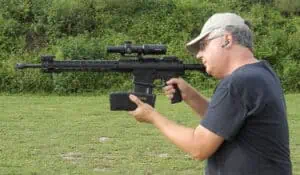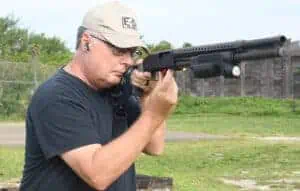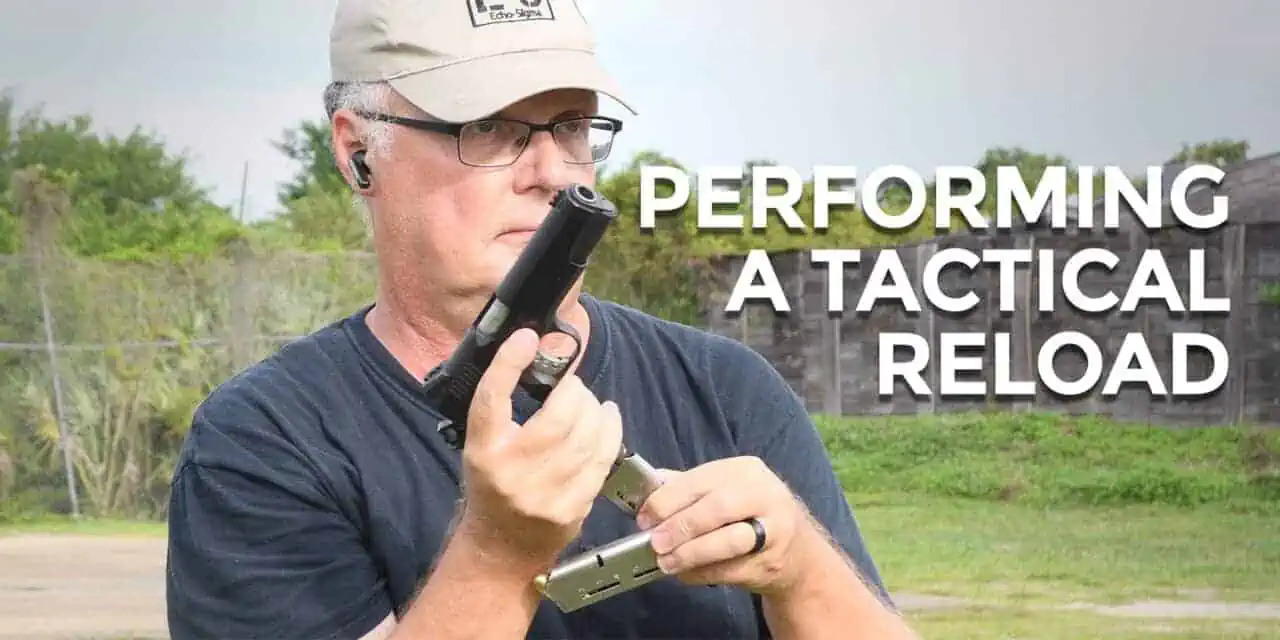Top Off The Tank With A Tactical Reload
All good things must come to an end, or so the saying goes, and with a few exceptions, it holds true for the rounds inside your firearm. Unless you’re firing a belt-fed weapon and can link the belts together, at some point, you’re going to need to reload. On the range, shooting for fun, this is not a problem. When you’re fighting for your life, however, your firearm running out of ammo can have very bad consequences. Performing a tactical reload prevents this problem, as they allow you to keep your gun topped up when the going gets rough. Let’s take a look at the theory and practice of the tactical reload and how it applies to us, the armed citizenry of the United States.
At their essence, a tactical reload keeps your gun loaded with ammunition, without compromising your ability to defend yourself. What sounds easy, it can be tricky to perform without practice. If done improperly, they’ll leave you with a half-full gun and your spare ammo lying on the ground in front of you.
Not a good place to be.
If your gun is out of ammo, it’s not in the fight, and if it’s not in the fight, it’s of very little use to you. We’ll be looking at how to top off a pistol, shotgun, and a magazine-fed rifle. We’ll also take a look at how they may or may not integrate into your training and your daily carry.
The Basics Of The Tactical Reload
Let’s talk about what a tactical reload really is. It’s not reloading your gun after all the rounds inside of it have been shot. That’s an emergency reload, and it should be a rare occurrence for you. Rather, you execute a tactical reload either during a gunfight as a way to make you have as much ammo as possible in your gun, or perform it after the gunfight to make sure your gun is ready if other attackers show up.
You should perform a tactical reload behind cover or concealment, if they are available. If not, get your feet in motion and find some. At best, you’ll get yourself out of the line of fire. At worst, you’ll present a moving target to your attacker. Secondly, you want to keep your gun ready for action. This means keeping as much ammo as possible in your gun at all times. Lastly, you’ll want to keep as much ammunition with you as you can. You should stow away any partially full magazines. Don’t just toss them aside on the ground.
Topping off your pistol
Pistols are the primary defensive tool for the armed citizen because they are the firearm that is most likely to be near us if we need a gun. Pistols also have limited ammunition capacity. The S&W Shield I carried for years has just 8 rounds of 9mm in the magazine, and that can be an issue when facing multiple attackers. To make matters worse, pistol ammo is lower-powered than rifle or shotgun ammo. This, in turn, means it will probably take more hits to stop an attacker, making a bad situation (the low capacity of a pistol) even worse.
How to Perform a Tactical Reload
Performing a tactical reload with a defensive pistol is a four step process:
- Retrieve a fully loaded magazine from your storage pouch or wherever it might be on your person.
- Bring the magazine up to your pistol. Eject the partially loaded magazine that’s in your gun into your hand that contains the fully loaded magazine.
- Load the pistol with the full magazine. Make sure the magazine is properly seated in the frame.
- Stow the partially loaded magazine on your person somewhere.
Sounds easy, and in theory, it is. The devil, however, is in the details.
The Process Of Performing A Tactical Reload
The first step in performing a tactical reload shows us the importance of carrying a spare mag in a magazine pouch or someplace that’s readily accessible. The few seconds it takes to fumble around in a pocket for your spare magazine will be the longest (and possibly last) seconds of your life.
Next is one of the trickier bits of a pistol tactical reload, holding on to two magazines at the same time. I like to hold the full magazine with my thumb and forefinger, and then catch the partial magazine with the rest of my fingers as it leaves the pistol. I then slide home the magazine with my palm with a firm shove. As I move my hand back to stow my other magazine, I give the seated magazine a slight tug with my thumb and finger to make sure it’s in place. I stow the partially used magazine someplace where I can easily stow it. It’s much more important for me to get back in the fight than it is for me to find the perfect spot to keep extra ammo.
Not Just For Pistols
 Tactical reloads aren’t limited to just pistols, however. You can also perform them with rifles and shotguns when there is a lull in the fight. The idea is the same, though, adding more ammo to your gun when you can. If there is a lull in the fight, and if cover is handy, a tactical reload probably isn’t a bad idea.
Tactical reloads aren’t limited to just pistols, however. You can also perform them with rifles and shotguns when there is a lull in the fight. The idea is the same, though, adding more ammo to your gun when you can. If there is a lull in the fight, and if cover is handy, a tactical reload probably isn’t a bad idea.
Performing a tactical reload with a magazine-fed rifle is very similar to a semi-automatic pistol. The first step is to retrieve a full magazine and bring it up to your gun. As it comes towards the rifle, rotate the magazine forward as it nears the gun so the rounds inside of it are facing forward. Eject the partially full magazine in your gun into your hand, and hang onto it as you rotate your hand back towards you. Line up the full magazine with your magazine well and slam it home. Stow the magazine somewhere on you where it’s handy to get to, and move on.
 Topping off a magazine-fed shotgun is done very similarly to a magazine-fed rifle. Individual shotshells can be fed, one at a time, while still keeping your gun pointed towards the target and your eyes on what’s happening around you. This brings up an important point. All of these techniques we’ve discussed have one thing in common. They are designed to keep you looking up. This allows us to keep our head in the action while we top off our gun. They also keep your gun in action, minimizing the amount of time your gun is without a full load of ammo.
Topping off a magazine-fed shotgun is done very similarly to a magazine-fed rifle. Individual shotshells can be fed, one at a time, while still keeping your gun pointed towards the target and your eyes on what’s happening around you. This brings up an important point. All of these techniques we’ve discussed have one thing in common. They are designed to keep you looking up. This allows us to keep our head in the action while we top off our gun. They also keep your gun in action, minimizing the amount of time your gun is without a full load of ammo.
How Useful Are Tactical Reloads, Anyways?
Now that we’ve learned how to perform a tactical reload, let’s look at how they work in the real world for the average armed citizen. If we look at any number of resources out there, we find that reloads are very uncommon for gunfights involving armed civilians. Even when there are multiple attackers, practically every encounter that we have records for is settled with just the ammunition in the defender’s gun at that moment.
Times change, however, and now we may face threats with many, many attackers coming at us all at once. This, in turn, increases our chances of needing to reload, especially in a situation where we can’t find the relative safety of cover and concealment. Knowing how to perform a tactical reload is not as urgent a need as knowing how to press the trigger or keeping your sights on target. However, a gun without any ammo in it is an unwieldy club at best, and an expensive paperweight at worst. Keeping your gun topped up with a tactical reload might be the difference between a successful armed encounter and one that ends very, very badly.



